Emergency Planning
Would you know what to do in the event of an emergency? The following are some guidelines and recommendation to help you and your famil prepare for disaster.
Welcome to the Scott Homes— Custom Mountain Home Blog! We like to provide our owners and prospective owners with the resources they need to make a well informed decision. A variety of articles are written and obtained to provide the information needed to aid in making specific decisions. We hope these articles are helpful to you in our home building process and your home maintenance process. Please visit with us on a routine basis as we try to add current and timely articles on a regular basis.

Would you know what to do in the event of an emergency? The following are some guidelines and recommendation to help you and your famil prepare for disaster.

Creating a 'defensible space' around your home is one of the most important and effective steps you can take to protect you, your family, and your home from catastrophic wildfire. Defensible space is th earea between a structure and an oncoming wildfire where nearby vegetation has been modified to reduce a wildfires intensity.
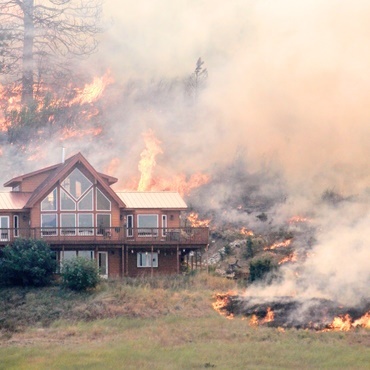
Firewise Construction involves using non-combustible building materials and keeping the area around your home free of debris. The following .pdf will describe each concept and offer alternative building materials that will reduce a home's risk to wildfire. Firewise construction and landscaping helped protect this home from wildfire.

Nearly every state has been devestated by wildfires in the last century. More than 140,000 wildfires occur on average each year. Since 1990, more than 900 homes have been destroyed each year by wildfires. So what can you do to protect yourself, your home, and property from wildfires?

Mountain residents often worry about the quality of their water. Some people think of mountain water as the purest on earth, while others argue the effects of high levels of bacteria and othe contaminants. One thing is known, the very nature of a mountain ground water system makes it vulnerable to contamination.

Grassfire Mitigation includes vegetation management, property management and prevention. The Colorado Springs Fire Department recommends creating at least 10 feet of separation immediately around the home as well as mowing grasses and weeds to a height of no more than 4 inches at least 30 feet from any structure, but not to extend beyond the property line. You can manage the vegetation beyond 30 feet as long as you do not encroach on your neighbor. Remember, you can't treat what you don't own!

Insurers and homeowners share a common goal of reducing exposure to losses from wildfires and ensuring that consumers have adequate homeowners coverage in place to recover from financial losses that can occur. It is very important to regularly revisit the amount of insurance carried on a home to be certain it is sufficient to cover a major loss. An annual insurance check up will help make sure you have enough insurance coverage to rebuild your home in the current construction market.
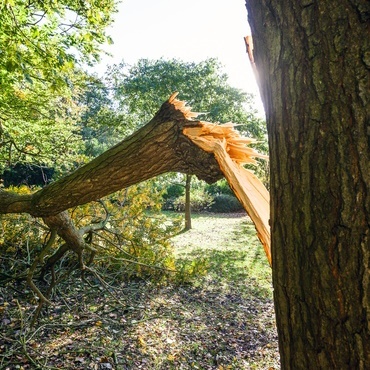
The pounding of rain or hail, the fury of wind and the weight of snow and ice test the strength of a tree’s limbs, trunk and root system. The care you give your trees before and after a storm can be the key to their survival and keeping them from falling on your home, car or other valuable property.

Edible landscapes combine fruit and nut trees, berry bushes, vegetables, herbs, edible flowers and ornamental plants into aesthetically pleasing designs. The designs can incorporate any garden style and can include just a few, or be completely comprised of edible species.
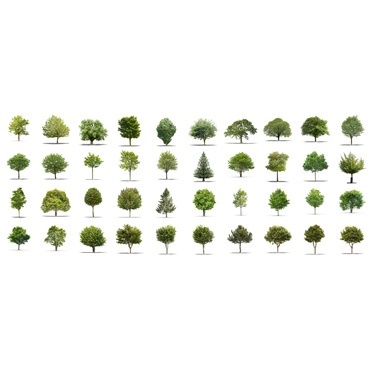
The trees you choose to landscape your home not only add beauty, they can help cut energy costs by providing shade in the summer and buffering cold winds in the winter. Trees clean the air, reduce noise, create privacy and can increase a property’s value by improving the appearance. It is important to consider a number of factors when choosing the right trees for your particular environment and the best locations to plant trees in your yard.
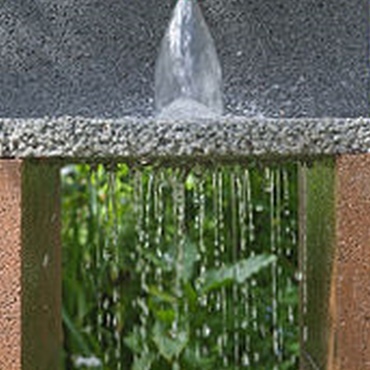
Using porous pavement for a home's driveways, walkways, and patios has numerous benefits for the environment. For one, it helps recharge groundwater by allowing rain and snowmelt from paved surfaces to percolate into the soil. Porous pavement also reduces stormwater runoff and the contaminants that runoff carries. Further, the water that is absorbed into the soil is of a higher quality because porous pavement systems filter some pollutants out of the water before it's absorbed.

There is more to a home than its walls, insulation, and foundation--yards offer homebuyers space to relax, cook out, and enjoy nature. Homebuilders can think of a yard as an additional room of the home, requiring the same amount of planning and maintenance as the interior. Just as interior design elements help bring a home together, landscaping provides a finishing touch that makes a home feel complete.
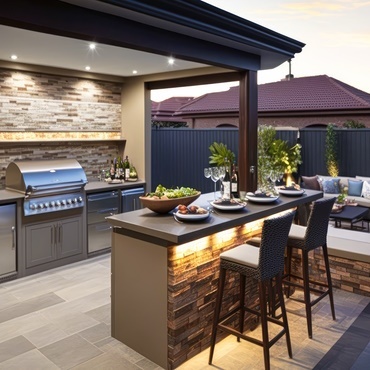
It’s too easy these days to live almost exclusively in a climate-controlled, electronic world. Your days are spent going from air-conditioned house to car to workplace, with your ear glued to a cell phone or your fingers typing away on your personal digital assistant in between. But as people try to re-connect with nature, a new trend in home design — bringing the indoors outside— is emerging.

Care, patience and a little bit of knowledge can make the difference between a lush healthy lawn and an arid brown eyesore. But proper lawn care is more complicated than setting out a sprinkler every once in a while. You can water or fertilize a lawn too little or too much, and even the time of day matters.

After you have bought the new home of your dreams from your builder, you will probably immediately start thinking about personal decorating touches that you can add. When considering these personal touches, don't think just about the interior of the house.
The landscaping around it will also be very important. Trees can affect everything from your heating and cooling bills to your resale value -- some surveys have put this increased value in the range of 10 to 15 percent. Trees can produce shade, food, firewood or just a beautiful scene. They can also attract birds and other wildlife.

By following the best framing techniques when installing windows in the home, you can save time and money. Framing takes up a good part of your lumber costs; if done incorrectly, it can lead to expensive mistakes and rework. Fortunately, there's a better way to frame windows than the conventional method.
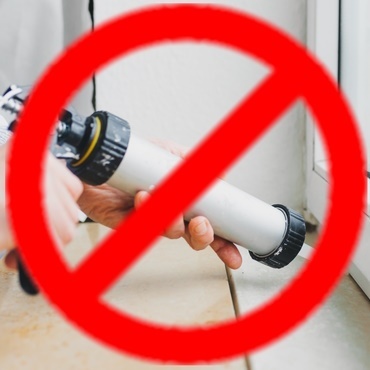
The way in which you install windows in a home greatly affects how well those windows perform. You need a good seal—one that guides water around the window opening and keeps the interior wall protected and dry. By using window flashing instead of caulk, you can increase protection from the weather for years to come.

After you have bought the new home of your dreams from your builder, you will probably immediately start thinking about personal decorating touches that you can add. When considering these personal touches, don't think just about the interior of the house.
The landscaping around it will also be very important. Trees can affect everything from your heating and cooling bills to your resale value -- some surveys have put this increased value in the range of 10 to 15 percent. Trees can produce shade, food, firewood or just a beautiful scene. They can also attract birds and other wildlife.

With the current emphasis on energy-efficient windows, the National Fenestration Rating Council has designed an energy-performance label to guide contractors and homeowners in their search for the perfect window. Since the climates in different parts of the United States vary widely, checking the label before ordering the window can make a big difference in how much the window can help your client keep energy costs to a minimum.

Choosing the best water heater for your home has become more challenging in recent years as new designs have swept the industry and rising energy costs have raised consum-ers’ eyebrows. In spite of the promise of the high-tech water heaters of the future, most folks in need of a water heater today still find themselves facing the same decision: tank or tankless?

Many current buyers are interested in homes that are energy efficient and economical to operate, which are factors that can be dramatically affected by a home's hot water usage. According to the DOE's Office of Energy Efficiency and Renewable Energy, water heating is the third-largest expense in most homes, accounting for 14% to 25% of a home’s expenses.

A home's water heater affects both the comfort level in the shower and bath, as well as the monthly utility bill. If a conventional heater is the wrong size, hot water may run out too soon, while constantly heating and re-heating stored water for the home's needs can be costly.
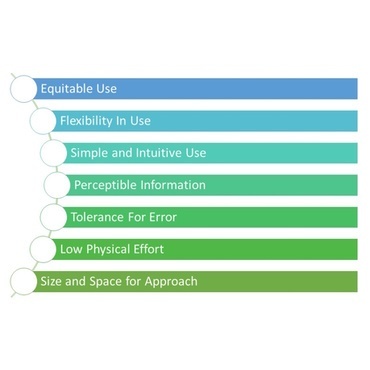
The design of products and environments to be usable by all people, to the greatest extent possible, without the need for adaptation or specialized design. The authors, a working group of architects, product designers, engineers and environmental design researchers, collaborated to establish the following Principles of Universal Design to guide a wide range of design disciplines including environments, products, and communications.

A recent study by the American Society of Interior Designers (ASID) showed nearly 80 percent of Baby Boomers surveyed said they planned to remain in their current homes into their retirement years. According to Sisler Johnston Interior Design, incorporating aging-in-place design principles will make it easier for these individuals to overcome the physical barriers of the aging process and retain independence while living in comfort and style.

Even if retirement is a few years down the road, it’s not too early to start planning for your home of tomorrow. While you probably have made arrangements for your financial future, you may not have given much thought to making the most of your next home’s design. But it’s important for your home to accommodate anybody, regardless of age or ability. How can you accomplish this? With universal design for Aging in Place.

The life expectancies of the components of a home depend on the quality of installation, the level of maintenance, weather and climate conditions, and the intensity of use. Some components may remain functional but become obsolete due to changing styles and preferences or improvements in newer products while others may have a short life expectancy due to intensive use.
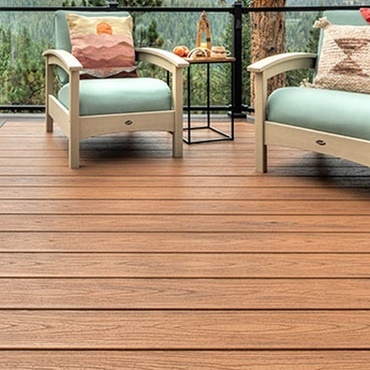
Composite decking is made from recycled hard wood fibers and recycled polyethylene fibers from items like grocery bags, milk jugs, and PVC vinyl. The wood fibers protect the decking from UV damage and add stability. The plastic fibers help prevent rot and splitting, which are common in lumber-based decks.
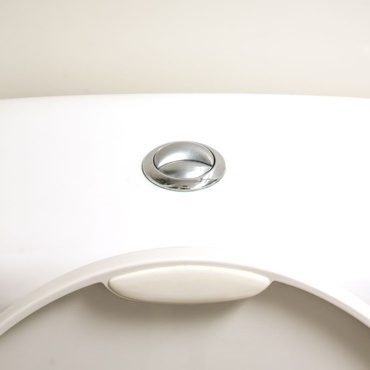
High performing low-flow toilets currently available are engineered to use less water and use it more powerfully. Today's high-performing models do remove waste as efficiently, or more efficiently, than conventional toilets while using much less water.

Each year, thousands of gallons of wasted water go down the drain in American homes, and with them, thousands of dollars for homeowners, utility companies, and taxpayers. A significant amount of this waste occurs when homeowners wait for their water to reach a comfortable temperature before they shower or wash their hands.

The first copper pipes were used in plumbing systems nearly 5,000 years ago. Today, a majority of homes use copper pipes for water distribution. Copper holds certain advantages over other metals like lead and iron. In comparison to these metals, copper is softer and easier to work with and is relatively non-toxic.
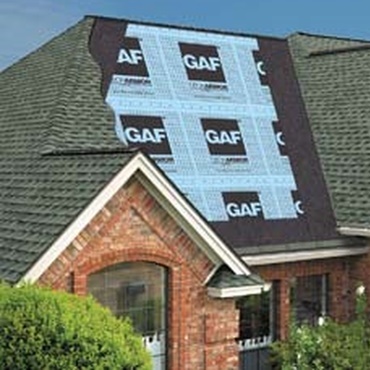
Greening a home goes above and beyond just replacing windows and installing a programmable thermostat. Energy efficiency can be found in all facets of the home — from the foundation to the roof. Here are a few tips that builders and remodelers can implement when doing roofing work to make the home greener and the home owner happier.
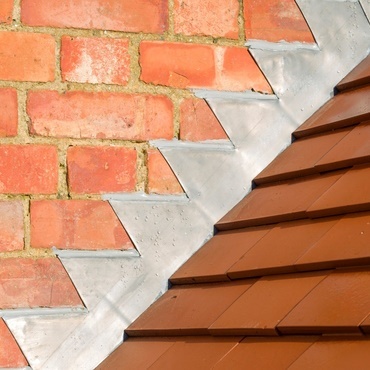
Weather is a relentless bully. It seems to focus its stormy strength on a home's most vulnerable areas, attacking over and over again until rain and moisture infiltrates, and eventually damages, the home. Because a home's roof takes the brunt of the attack, it's critical to protect vulnerable areas of the roof against the elements, especially rainfall.

Determining the correct size of residential heating and cooling equipment is key to achieving comfortable interior conditions — temperature and humidity — and saving on initial and operating costs.
With today's energy costs, it's impossible to justify installing only basic thermostats in a new home. Modern thermostats not only decrease energy consumption, but they can also increase the comfort in the home all year long.
There's nothing like a cold bathroom floor to wake you up first thing in the morning. Most of us simply accept cold, uncomfortable tile floors as a necessary evil, and we buy slippers and carpets to compensate. The best practice not only for warming floors but also for heating the entire room is radiant under-tile heating.
Natural gas is commonly used in homes as an energy source. And like any energy source, it must be used correctly to be efficient and safe.
Most sportsmen (and sportswomen) will agree—a bad day fishing is STILL better than a good day at work. But fishing for cables to wire a home office can be a bad day for any homeowner.
For some it may be something as simple as remote or automatic control of a few lights. For others, security may be the central application. Still others may choose to install advanced controllers or use voice recognition. As a very basic definition, we tend to refer to home automation as anything that gives you remote or automatic control of things around the home.
Decisions that are made while framing the house can affect the new homeowners in unexpected ways. For instance, how you frame an exterior corner will affect how well the house is insulated -- and that can affect moisture and mold.
Builders can lose a lot of sleep worrying about gaining a competitive edge while constantly improving the quality and durability of the homes they build. But luckily, there are new techniques like OVE -- and specifically stack framing -- that can help builders get a full night's rest.
It's a problem that can find its way into any new home, and it accounts for an estimated 14,000 deaths each year. Odorless, tasteless, and radioactive, radon gas is an issue to be taken seriously by both builders and homeowners.
A joist is the structural skeleton of the floor. Without joists there would be no floor. Framers commonly install solid sawn floor joists. However, new technologies have led to a new joist, one with an open metal web system.
The framing for most homes is wood. The problem is that wood is not a very good insulator. So we use what are called "ladder panels" when we attach interior walls to exterior walls. This allows us to better insulate the home and use less wood during the framing process.
Showers, tubs, and fireplaces are all areas of the home especially susceptible to uncomfortable drafts. Trying to resolve a complaint after construction can be costly and difficult.
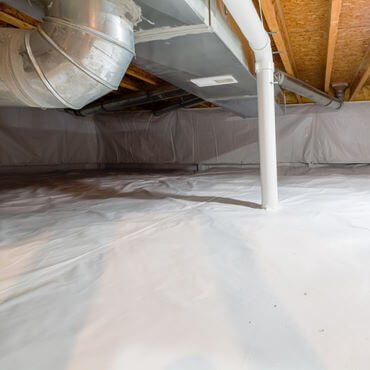
The construction of crawlspaces has gone through an evolution of building science that turns the conventional practice on its head. Venting a crawlspace can actually do more harm than good. It can compromise the durability of the house and create a health hazard for the occupants.
Acoustic wall framing is the "best practice" for reducing unwanted noises from traveling through the walls of a house, from both inside and out.
Proper backfilling of the foundation is one of the first steps in good residential construction. The method used can have long-lasting consequences on the life of a new home. This is especially true when considering basement-type foundations. Improper backfill has the potential of creating structural failures within the foundation. Good planning can help to avoid these costly failures.
Good drainage is important to ensure your home and basement stay dry. As ground water rises or excess rain comes down, a french drain will take the water away from the foundation.
A common misconception is that heat always rises. Heat is in constant motion, moving from warmer areas to colder areas until an overall equal temperature is established. To manage the movement of heat within a home, builders and homeowners are constantly looking for areas around the home to beef-up insulation.
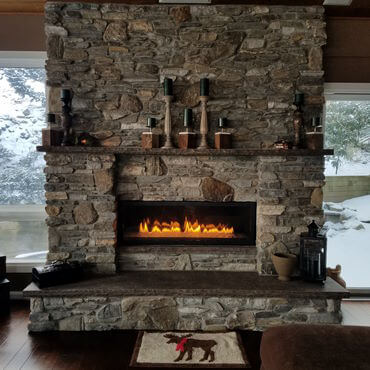
Fireplaces, whether they are wood-burning or gas, are both fashionable and functional additions to many homes. Families gather around decorated hearths for holiday celebrations as they build lifelong memories.
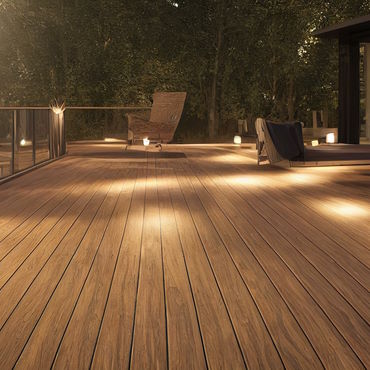
To build a wood deck or a synthetic deck, that is the question. Each has its pros and cons but which is right for you. There is a lot to be said for maintenance free. But are they really?
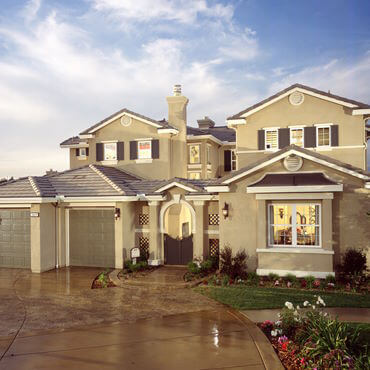
Think stucco finish can stop rainwater and moisture in its tracks? Think again. Stucco finishes are actually porous, which means that water can get sucked up through the pores and enter into the walls. What's more, stucco can crack over time,
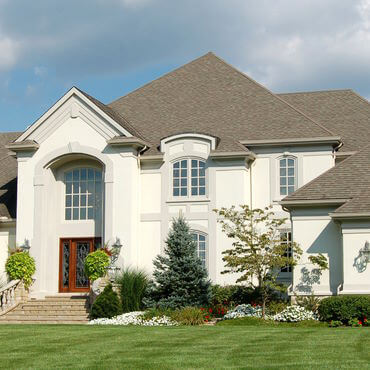
Window replacement is one of the most common home improvements people make in any type of house, but it takes special skill to blend the repairs into an existing stucco surface.
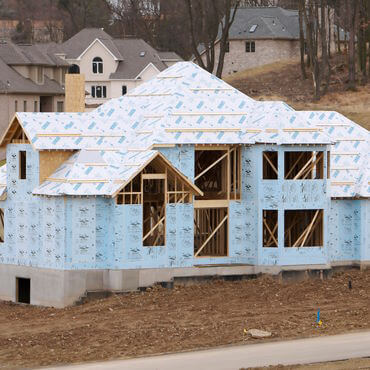
House wrap is an important feature that protects your home. It creates an air and moisture barrier that boosts a home's energy-efficiency and creates a healthy, comfortable indoor environment.
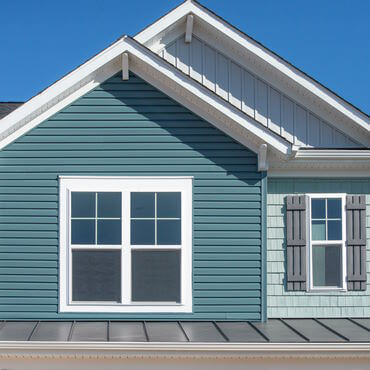
When you are considering the type of look you want for the exterior of your home, fiber cement siding is a solid choice offering a fire-resistant, high quality, long lasting solution. Compared to wood siding, there is no decision to be made. Fiber cement siding wins every time.
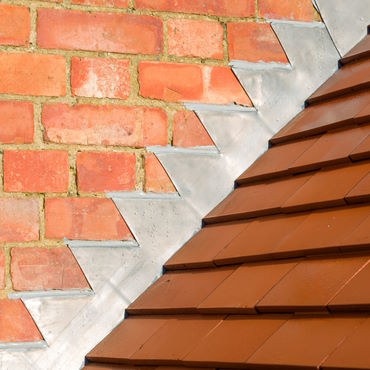
No matter what the exterior of your home is (brick, stucco, etc.) you need something between the exterior and your interior walls to keep water out. That's where flashing comes in.
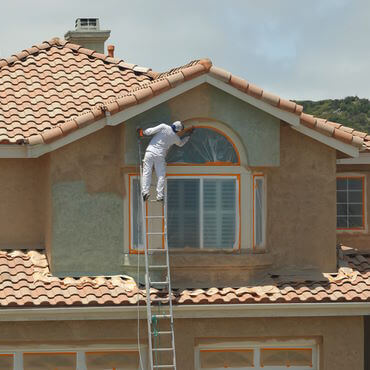
Many people choose stucco for the exterior of their home because they like the idea of "low-maintenance." But stucco is made with cement as your driveway or sidewalks. With expansion and contraction due to weather and other factors, your stucco can also crack.

Home offices are becoming less of a luxury and more of a necessity with more people telecommuting or running their own businesses from their house. The number of Americans who work from home is in the millions, and with the rising cost of gas and increased traffic causing longer commutes, that number is likely to grow even more every year.

It’s official! You’ve dropped your youngest child off at college and are returning back to an empty nest. While it is can be bittersweet to see your child leave home in search of independence and adulthood, it can also be a joyous time for you now that you finally have the house all to yourself.
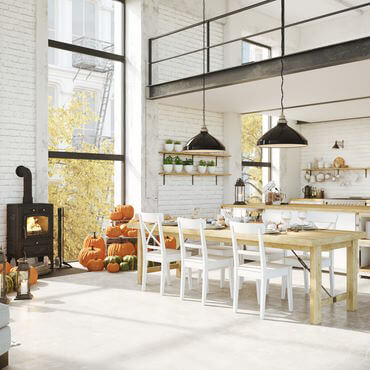
Each year at the National Association of Home Builders’ International Builders’ Show, the Best in American Living Awards (BALA) provide recognition to builders and design professionals who have accomplished outstanding design achievements. Awards are given in all sectors of the residential housing industry, including single-family production, custom, rental, affordable, interiors, remodeling, community and international.

While many older homes have not been built to be energy efficient, and you may not have the money to retrofit your home to today's standards, there are plenty of ways you can easily conserve energy and reduce your utility costs.

Not many people think about what they will need in their home as they age. As you build your custom home, you might want to consider what you will need to stay in your home until you are ready to leave this earth. The term for readying your home for your advanced years is called "aging in place."
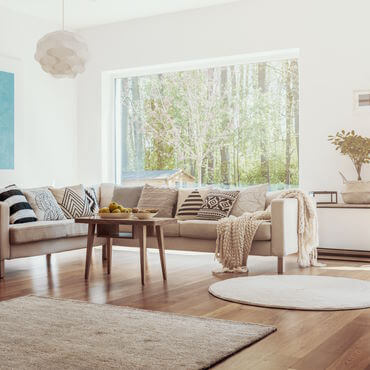
If you love natural light in your home but don't enjoy the extra heat in the summer, this tool from the Lighting Research Center allows architects, builders, and others involved in the design of your custom home to determine how much light can be brought into your home without it getting too hot or being too cold.

Can you imagine living in a 175,000 square foot home? That’s how large George Vanderbilt built his North Carolina home, the Biltmore, in 1895. With 250 rooms and 43 bathrooms, the home had more space than his family, or quite possibly anyone’s family, could ever hope to use. Even though the average home in the United States is far smaller than the Biltmore, it is a fact that Americans have tended to build larger and larger homes over the years. In 1973, the typical newly-built home was 1,660 square feet. Near the end of 2008, the average size had grown to more than 2,500 square feet.

It’s too easy these days to live almost exclusively in a climate-controlled, electronic world. Your days are spent going from air-conditioned house to car to workplace, with your ear glued to a cell phone or your fingers typing away on your personal digital assistant in between. But as people try to re-connect with nature, a new trend in home design—bringing the indoors outside—is emerging.
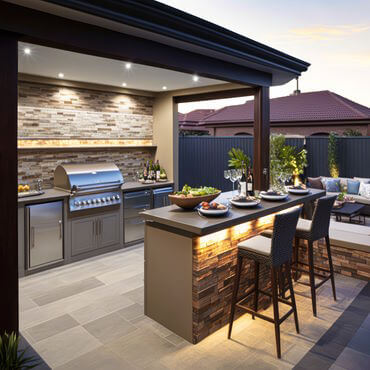
Most homeowners will agree that it’s just not summer without the sizzle of the grill. But running back and forth from the kitchen to the barbeque can get old quickly. Outdoor kitchens make life easier for those who frequently enjoy grilling their meals, can enhance your home’s resale value and enjoy growing demand among prospective home buyers.
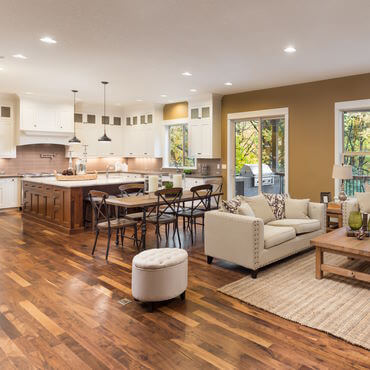
Spend lazy Saturday afternoons browsing the pages of Architectural Digest or Dwell, wishing you had the budget to hire an interior designer to replicate their artistic interiors? Well-designed rooms don’t always have to come with a huge price tag; in fact, designing on a budget
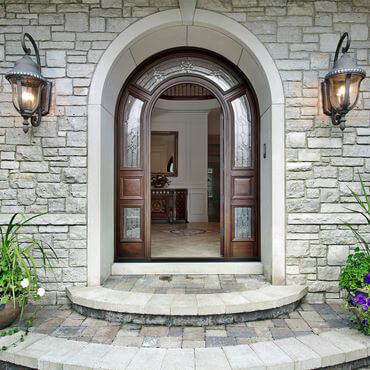
The entry to your home is often the first thing visitors see when they arrive at your home and can set the tone for what comes next. Whether your building a quaint and cozy cottage or a palatial estate
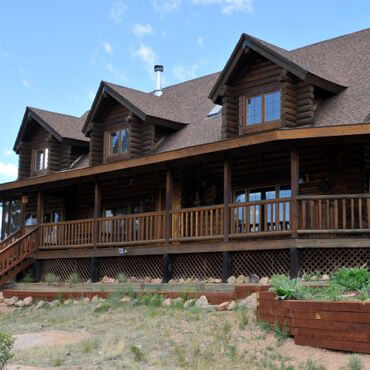
You don’t have to live in the mountains of Montana to enjoy log home living. You can find them in cities and towns across America; they include amazing amenities and options not found in the log cabins of yesteryear.

From the foundation to the sidewalks and patio, concrete is a large part of your custom home. Here is what you need to know about concrete curing.

To have your kitchen countertops show their best and last for a long time, its best to know how to care for them. Each material has different cleaning methods. This article from HGTV will provide information on the best ways to maintain your countertops.

Countertops for your kitchen and baths come in many options. Before choosing you'll want to be know how well they'll last and how to care for them. This article from HGTV gives information on the many styles.

When clothes are taking a long time to dry or do not seem to be drying at all, running through this checklist from GE Appliances can help you determine the cause.

Asthma, allergies, dizziness, fever, headaches and more can often times be attributed to poor indoor air quality. Installing a central vacuum system in your new custom home can help.